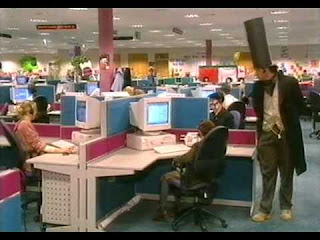The industrial design is a specialized field of work that refers to the activity of achieving ornamental or formal appearance for mass-produced items or products. In simple words, industrial design is a creative and artistic profession, which involves the creation of a product design, its features, and branding. These products can be a toy, furniture, or even the packaging of a certain item.
Legally, industrial design also refers to a registration system, which protects the functional and unique ornamental characteristics of a product that results from the design activity. However, as easy as the process seems, it actually is not. In fact, industrial design involves numerous complications and problems that require constant attention in order to ensure the success of a product.
Therefore, when it comes to working for an upcoming project, it is imperative for you to cover the basics before you even think about accepting the task. Remember, only after you have mastered the basics it will be possible for you to create a successful product appreciated by consumers. The question is: what are these basics and how can you incorporate them? Well, read below and find out:
Goals
A designer has three roles: performing market research, conceptualizing the design of the product, and creating branding solutions. As you can see, all three of these roles are not exactly easy to perform. Therefore, the first basic element of industrial design is to familiarize yourself with the ultimate goals of the project assigned to you.
Now, you will find many goals that will require more effort and time from your end. However, this does not mean you forget to give importance to the hundreds of other goals that require attention in order to introduce a successful product into the marketplace. Therefore, when it comes to successful industrial design, make sure to understand all goals.
Research
Now that you have understood all goals of the project, it is imperative that you research the location and the specifics. Keep in mind that every successful item in the market has undergone significant research by an industrial designer. Similarly, you are required to do the same and have to carry out thorough market analysis and research.
Additionally, you must also familiarize yourself with the local codes and building regulations. This way, you will learn about all possible problems that you might face in the designing phase and can outline solutions to avoid them. You can also consider looking at similar projects to understand how they tackled numerous challenges presented during the design phase.
Legally, industrial design also refers to a registration system, which protects the functional and unique ornamental characteristics of a product that results from the design activity. However, as easy as the process seems, it actually is not. In fact, industrial design involves numerous complications and problems that require constant attention in order to ensure the success of a product.
Therefore, when it comes to working for an upcoming project, it is imperative for you to cover the basics before you even think about accepting the task. Remember, only after you have mastered the basics it will be possible for you to create a successful product appreciated by consumers. The question is: what are these basics and how can you incorporate them? Well, read below and find out:
Goals
A designer has three roles: performing market research, conceptualizing the design of the product, and creating branding solutions. As you can see, all three of these roles are not exactly easy to perform. Therefore, the first basic element of industrial design is to familiarize yourself with the ultimate goals of the project assigned to you.
Now, you will find many goals that will require more effort and time from your end. However, this does not mean you forget to give importance to the hundreds of other goals that require attention in order to introduce a successful product into the marketplace. Therefore, when it comes to successful industrial design, make sure to understand all goals.
Research
Now that you have understood all goals of the project, it is imperative that you research the location and the specifics. Keep in mind that every successful item in the market has undergone significant research by an industrial designer. Similarly, you are required to do the same and have to carry out thorough market analysis and research.
Additionally, you must also familiarize yourself with the local codes and building regulations. This way, you will learn about all possible problems that you might face in the designing phase and can outline solutions to avoid them. You can also consider looking at similar projects to understand how they tackled numerous challenges presented during the design phase.
Cost
The design of any project can get incredibly costly. Now, why is that? As mentioned earlier, industrial designers have three main roles of which one is to conceptualize the design of the product. This process includes creating presentations that cover the product's usability, design, features, and functionality. Therefore, any errors in this phase can cause numerous troubles in the development phase, thus leaving no option than to repeat the whole process.
This repetition of the entire process will of course require additional resources and significant time and effort. Therefore, the third thing you must do is look at ways you can control the cost and perform the designing phase carefully. This way, you can keep your budget from going out of hand.
Specialists
The final thing industrial designers are required to do is critically look at all the aspects of the project and determine the number of specialists required to ensure project completion within time.












